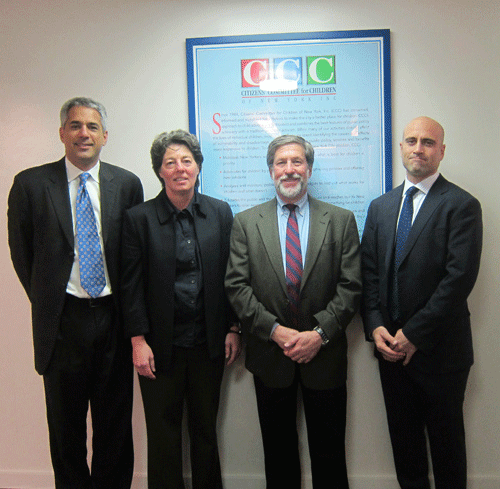New York State is one of six states that require physical education in every grade — kindergarten through 12th grade — and at least 120 minutes of activity per week for students in grades kindergarten through sixth. Yet, according to an audit of New York City’s Department of Education’s physical education programs in 2011, the 31 elementary schools reviewed were not in compliance with the state’s guidelines.
On Nov. 14, Manhattan College professor of kinesiology, Shawn Ladda, Ed.D., addressed this topic alongside her peers at the Citizens’ Committee for Children (CCC) of New York’s policy briefing, Making the Case for Physical Education in NYC Schools. CCC is the leading child advocacy organization in New York City, and the briefing explored the research behind the benefits of physical education, the barriers to overcome, innovative approaches and future advocacy opportunities.
“I gave an overview on the New York State learning standards in physical education and the mandate by the state regarding what grade levels are required to do what in physical education,” Ladda adds. “I also discussed pre-kindergarten through 12th curriculums, and what would be some unique nuances in the elementary, middle and high school levels.”
Jai Nanda, founder and executive director of Urban Dove and founder of Urban Dove Team Charter School; Brian Semonian, executive director of Phys Ed Plus; and Stephen Silverman, Ed.D., professor of education and chair of the department of Biobehavioral Sciences, Teachers College, Columbia University, also spoke at the policy briefing.
“At the end of the briefing, we wanted to make sure that people in the audience knew the difference between physical education and physical activity. Physical activity is when you exercise — you may not be skillful at it, but it’s physical activity,” Ladda says. “With physical education, there are learning outcomes and that is a big difference.”
Ladda went on to explain how when she is educating Manhattan College juniors in a Secondary Methods course, which focuses on teaching skills to secondary, middle and high school students, they receive a hands-on experience at a local Bronx school. The students witness the overcrowding in New York City public schools and the challenges teachers face with large classes.
“In that class, students hone their teaching skills, but they also get a real lesson in terms of Lasallian values and sub-standard education and trying to contribute to make a better education,” Ladda says.
In addition to teaching others about the importance of physical education for 18 years at Manhattan College, Ladda is the zone president for the New York State Association for Health, Physical Education, Recreation and Dance (NYS AHPERD). Ladda is also the past president of the National Association for Girls and Women in Sport (NAGWS), a century-old organization of the American Alliance for Health, Physical Education, Recreation and Dance (AAHPERD).
“I think the briefing will raise some awareness, but it takes a lot to make changes, including politics and infrastructure,” Ladda says. “I always have hope that the next leader will have a big impact on improving education.”